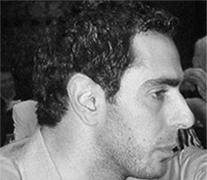
The existence of thousands of Armenians from around the world clearly shows that the genocide that took place in 1915 continues to reproduce its effects that have, until now, been never repaired.
The Armenian population now has about 10 million Armenians, almost 3 million live in Armenia, and the rest is distributed worldwide. The Armenian populations distributed worldwide, suffer continuously and gradually from losing their Armenian national identity.
However, the confiscation and destruction of property of the Armenian people and their historical memory were continued. These acts were intended to destroy evidence of the existence of Armenians in Asia Minor for 20 centuries.
Armenian goods were seized in 1915 by the Young Turk government and the Ottoman Treasury received detailed inventories. We even gave certificates to the assets of Armenians killed or deported.
The first bank accounts and other assets were confiscated in the Armenian provinces and transferred by order of the government in Constantinople.
Since there are official records of accounts, when the Turkish banks will they publish the names of Armenians whose money was never claimed? When the Turkish government is going to take out of his archives the records containing the lists of Armenian confiscated properties?
In addition to the massacre and expulsion of more than two million people, the Turkish government has stolen the assets of the Armenians; their property confiscated and destroyed their monuments. Collectively, these actions represent a huge illegal transfer of individual and community assets of the Armenian population to the Turkish and Kurdish peoples within the framework of a planned crime.
Today, outside Istanbul, Armenians have only six churches, no schools and no monastery. What happened to the 2500 and other remaining Armenian assets? What is the value of the Armenian heritage lost due to the systematic killing and exile?
In this context, it also necessary to mention the Turkish-Azerbaijani measures aimed at changing the traces of Armenian existence in the region of Karabakh and to contest the Armenian identity for this region.
This is considered a continuation for the crime committed against the Armenians.
Denial likewise constitute a form of unwillingness to fix the illegal situation created by the predecessor of the current Turkish state, the Ottoman Empire, and a basic condition for the recognition of Turkish responsibility for the crime of 1915.
The Turkish official authorities are undertaking a systematic and orderly denial of the 1915 genocide policy. From a moral point of view, the denial of the Genocide is even more serious than the lack of recognition.
Denial registers genocide in continuity and prevents break with past events. This is clearly the continuation of the Genocide by means of words and rhetoric. As said R. Hovannisian: "The denial of genocide is the final stage of genocide: it kills the dignity of survivors and destroys the memory of the crime."
Rodney Dakessian
Beirut, July 23, 2013

